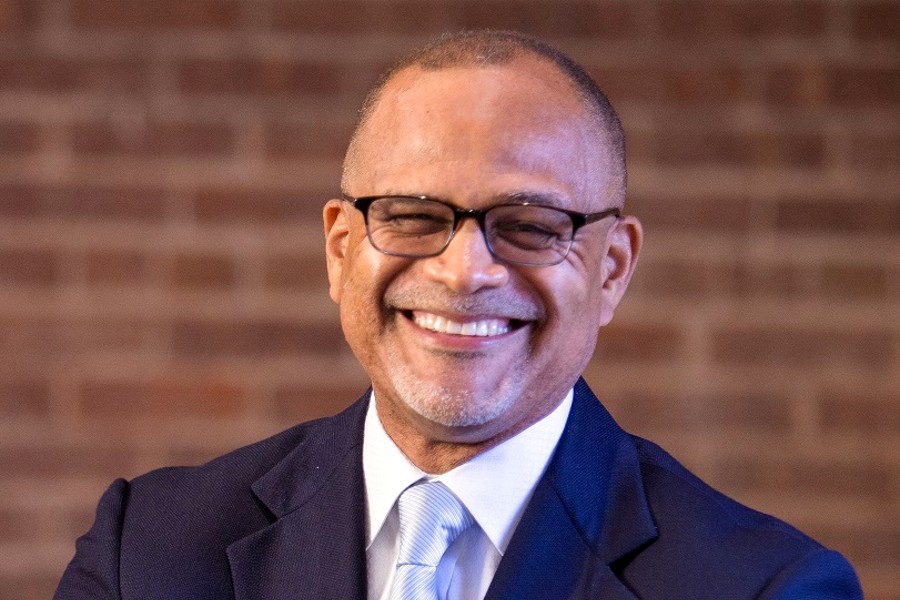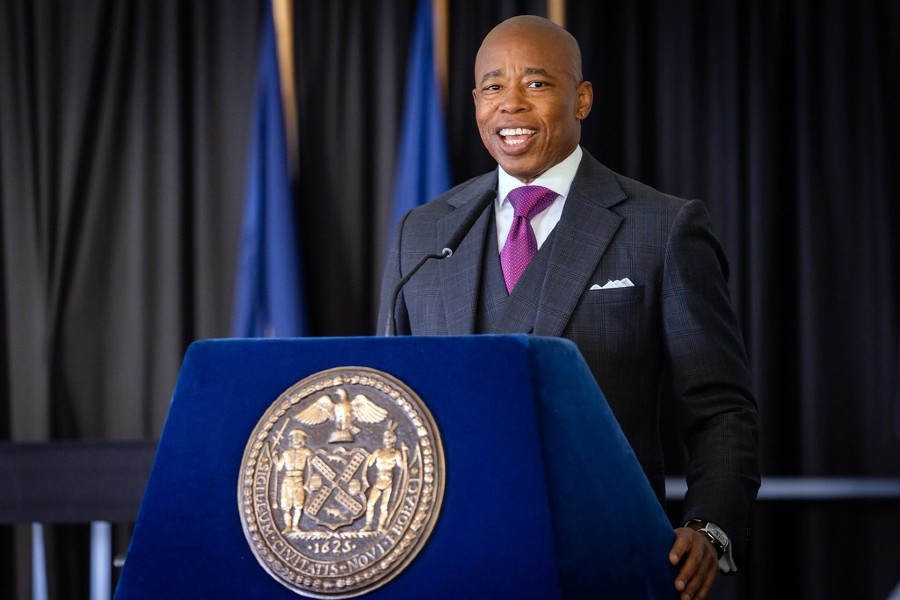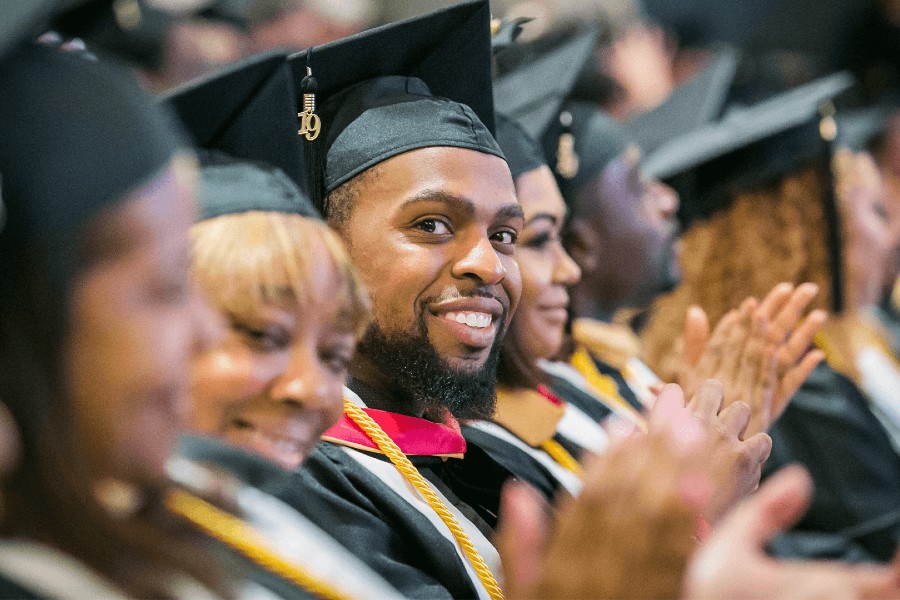
A new report released by the CUNY School of Labor and Urban Studies, State of the Unions 2023: A Profile of Organized Labor in New York City, New York State.
Including the United States, is a part of an annual publication series, documents recent trends in unionization patterns.
As Figure 1a shows, the overall level of unionization in both the City and State has been roughly double the national rate over the past two decades. But recently, union density has fallen more in New York City and New York State than in the United States as a whole. Although workers who are employed in New York may have a higher unionization rate, this report is based on data on workers who reside in New York City and State, because data on residents is more detailed and allows for deeper analysis. In the mid-2010s, both the City and State rates steadily hovered around 24 percent, but they began to fall after 2017. By 2022–23, only 17.7 percent of all wage and salary workers residing in the five boroughs of New York City, and 20.2 percent of those in the state, were union members.
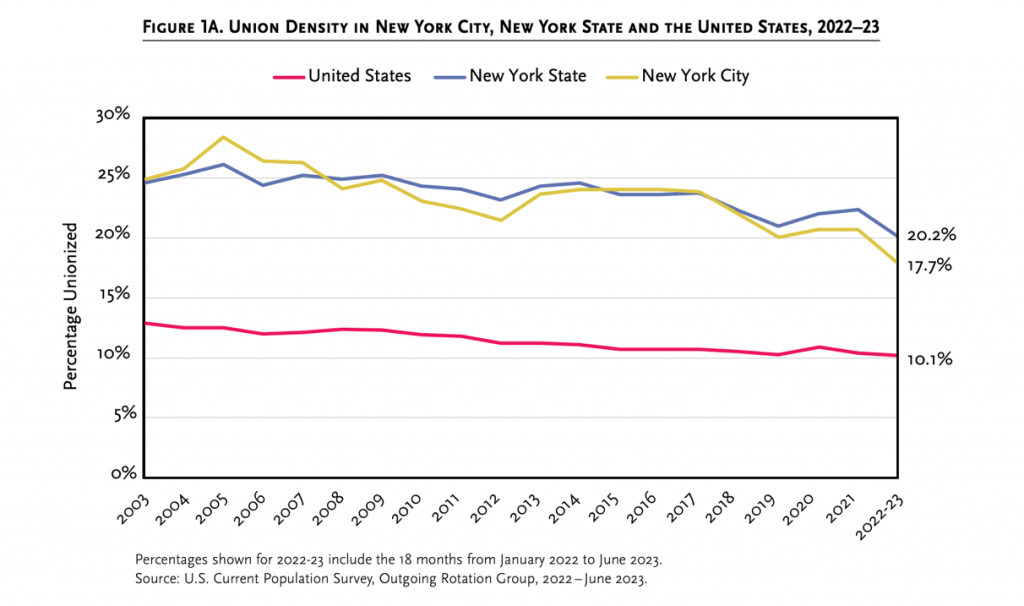
This year’s report includes a special feature guest authored by CUNY’s National Center for the Study of Collective Bargaining in Higher Education and the Professions at Hunter College, It analyzes the recent uptick in organizing and strikes among student-workers and faculty in higher education since January 2022.
U.S. labor unions have represented academic employees for more than half a century, primarily at public four-year higher education institutions and community colleges. Over the past decade, however, unionization in higher education has increased significantly, especially among contingent faculty and graduate student-workers at private colleges and universities.
“Labor activism has increased in the past few years among highly educated young workers, frustrated by poor pay and precarious employment, said report co-author Ruth Milkman, Distinguished Professor at the CUNY School of Labor and Urban Studies and the CUNY Graduate Center. “Museum workers, journalists, nonprofit staff, medical interns and residents, as well as graduate student workers in colleges and universities have turned to unions to improve their situations.”
“Organizing among college and university faculty, graduate assistants and other student workers is not new, but it has accelerated since the Great Recession, and further accelerated following the pandemic,” William A. Herbert, Distinguished Lecturer at Hunter College, and the National Center’s Executive Director notes. “Since January 2022, a significant upsurge has taken shape, primarily among student workers.” This new wave of campus labor activism, although larger in scale than before, builds on more than five decades of growth in higher education unionism.
Recent union campaigns by graduate and undergraduate student workers have seen significant success, thanks to such factors as:
- Growing support for unions among young adults, with 77 percent approving of organized labor according to a recent Gallup poll.
- Increased attention to campus working conditions and labor issues in general during the COVID-19 pandemic.
- Increased activity by traditional unions like the UAW, UE, and SEIU organizing workers in higher education.
As Figure B1 shows, during 2022 and the first half of 2023, unions won 30 new student-worker collective bargaining units, representing a total of 35,655 workers. Most of these involved graduate student workers, who make up 93 percent (33,314) of all student-workers organized in this period.
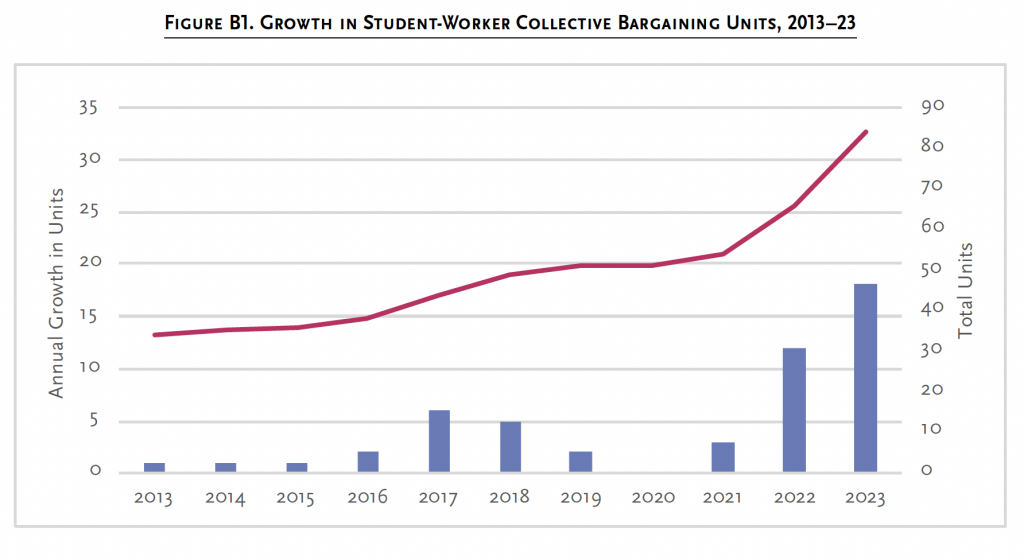
In 2022-2023, nearly three-quarters of the new graduate assistant units and all of the undergraduate bargaining units were formed at private colleges and universities. Examples include Yale University, the University of Chicago, the University of Minnesota, and Johns Hopkins University. This is in stark contrast to the trend prior to 2016, where nearly all of units consisted of graduate student employees at public institutions. The 2022-2023 growth in student-worker union organizing overshadows activity among faculty, for whom unionization growth was slower than in the pre-pandemic period, as Figure B3 shows.
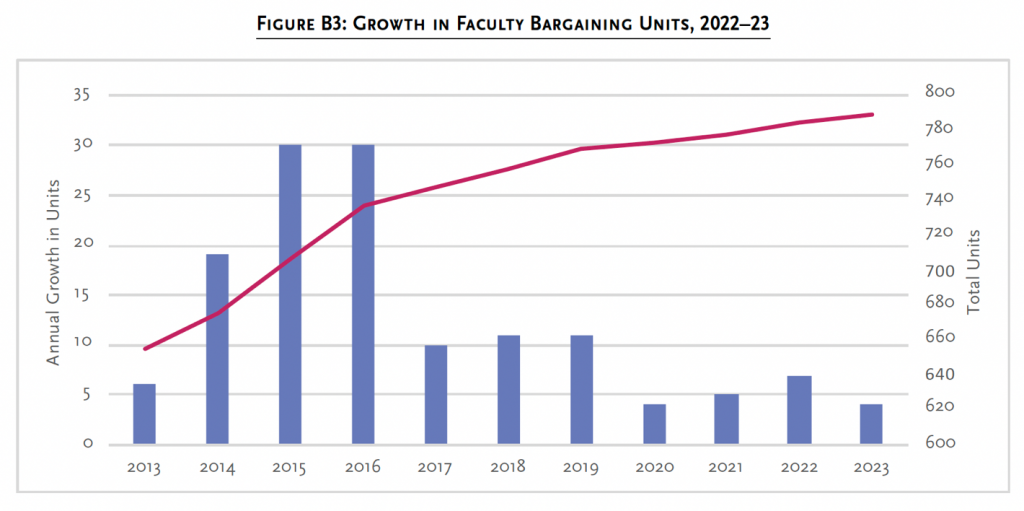
Between 2013 and 2021, 126 faculty collective bargaining units won recognition, involving a total of 42,466 faculty. Over half (55%) of these new faculty bargaining units were at private (including both for- and non-profit) institutions. By contrast, only 11 new faculty units have been recognized since January 2022, 10 of which included non-tenure-track faculty.
Whether the slower faculty unionization growth since January 2022 is a post-pandemic anomaly or part of a longer-term trend is unclear. Several new faculty organizing campaigns are currently underway, mostly among contingent faculty at private institutions. Future growth at public institutions may occur as new legislation expands public-sector collective bargaining rights.
Higher Education Strike Activity
Since January 2022, there have been 20 strikes in higher education involving student workers, faculty, and post-doctoral scholars as Figure B4 shows. These 20 strikes account for 32 percent of all higher education strikes since 2013. In 2023 alone, there were 10 strikes, with six of them involving faculty and post-doctoral units, and five involving student workers.
While college and university strikes are not new, the growth in strike activity in higher education is unprecedented within recent memory. There were only four student-worker strikes between 2013 and 2017. However, the tide began to shift in 2018, with a continuous rise in strikes in the years since. This is part of a larger increase in labor organizing and strikes, much of it among younger, college-educated workers. However, this recent uptick in activity has not been large enough to reverse the long-term overall decline in union density in the United States.

The CUNY School of Labor and Urban Studies
The School of Labor and Urban Studies (CUNY SLU) is the 25th school at The City University of New York. It offers undergraduate and graduate degree and certificate programs in Labor Studies and Urban Studies that are designed to meet the needs of working adults as well as traditional-age college students. SLU’s vision derives from its core values: access to education, diversity at every level, social justice, and equality for all. Its goals are to expand higher education opportunities for workers; prepare students who aspire to careers in public service and movements for social justice; promote civic engagement; provide leadership development opportunities for union and community activists; and help workers achieve greater economic security. For more information visit www.slu.cuny.edu.
The National Center for the Study of Collective Bargaining in Higher Education and the Professions at Hunter College
The National Center for the Study of Collective Bargaining in Higher Education and the Professions is a CUNY national labor-management research center housed in and supported by Hunter College. Since 1972, the National Center has served as a national research center dedicated to studying the use of collective bargaining as a form of workplace democracy. It believes that collective bargaining is an important means for advancing higher education and the working conditions at colleges and universities. The study of collective bargaining is essential for a knowledge-based dialogue concerning labor-management and educational issues. For more information about the National Center’s research, scholarship, and programming visit https://www.hunter.cuny.edu/ncscbhep.
Photo credit: CUNY.
- The Rise And Fall Of 65 West 128th Street: A Microcosm Of Harlem’s History
- From Rainforest To Asphalt: Amazon’s Sustainability Report Struggles To Navigate Harlem’s Future
- Broom Drill In A Harlem Church: A Unique 1882 Tradition
- Wells Fargo Shares Economic Impact From Open For Business Fund
- Harlem Rallies For Kamala Harris: A Historic Gathering Of Black Women Leaders
Become a Harlem Insider!
By submitting this form, you are consenting to receive marketing emails from: Harlem World Magazine, 2521 1/2 west 42nd street, Los Angeles, CA, 90008, https://www.harlemworldmagazine.com. You can revoke your consent to receive emails at any time by using the SafeUnsubscribe® link, found at the bottom of every email. Emails are serviced by Constant Contact





